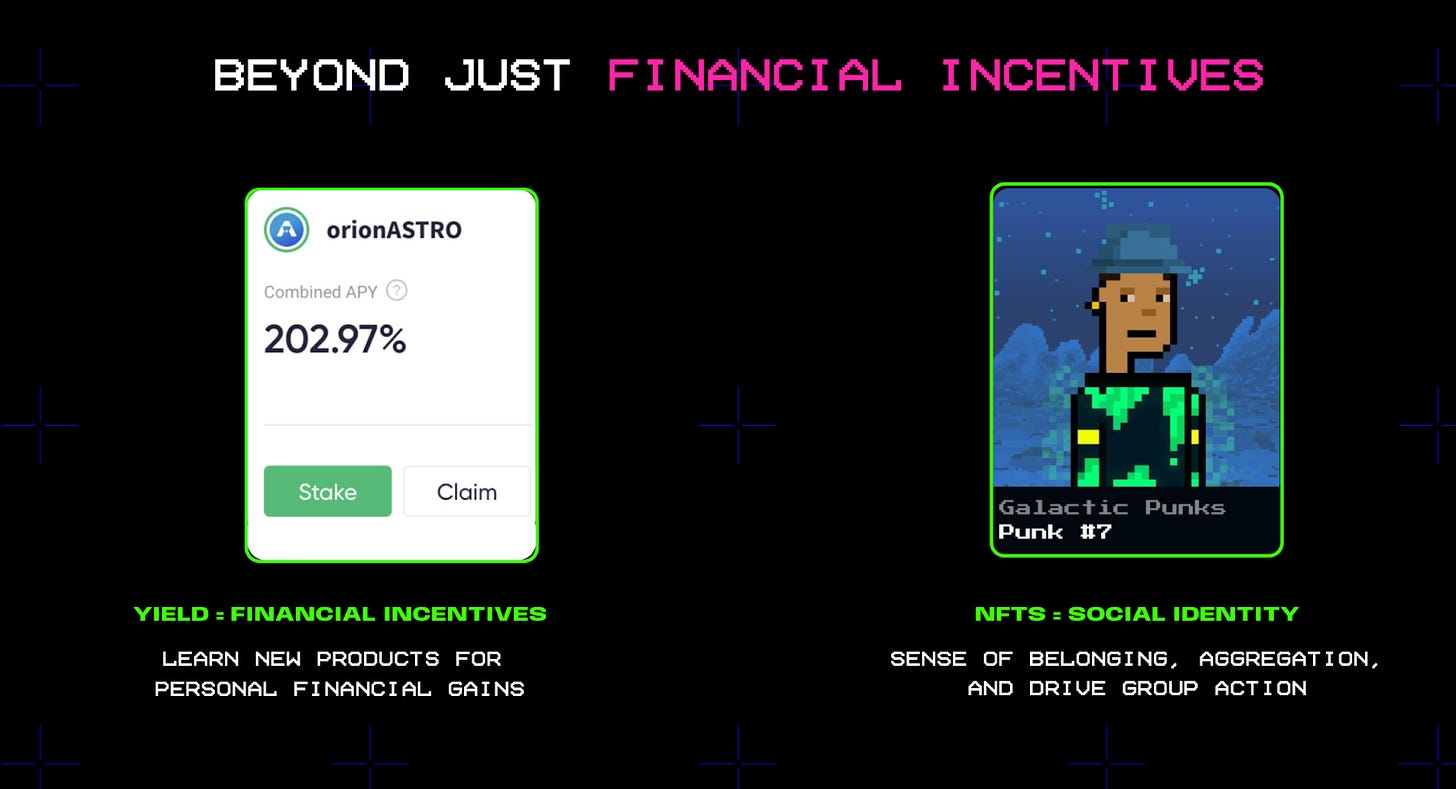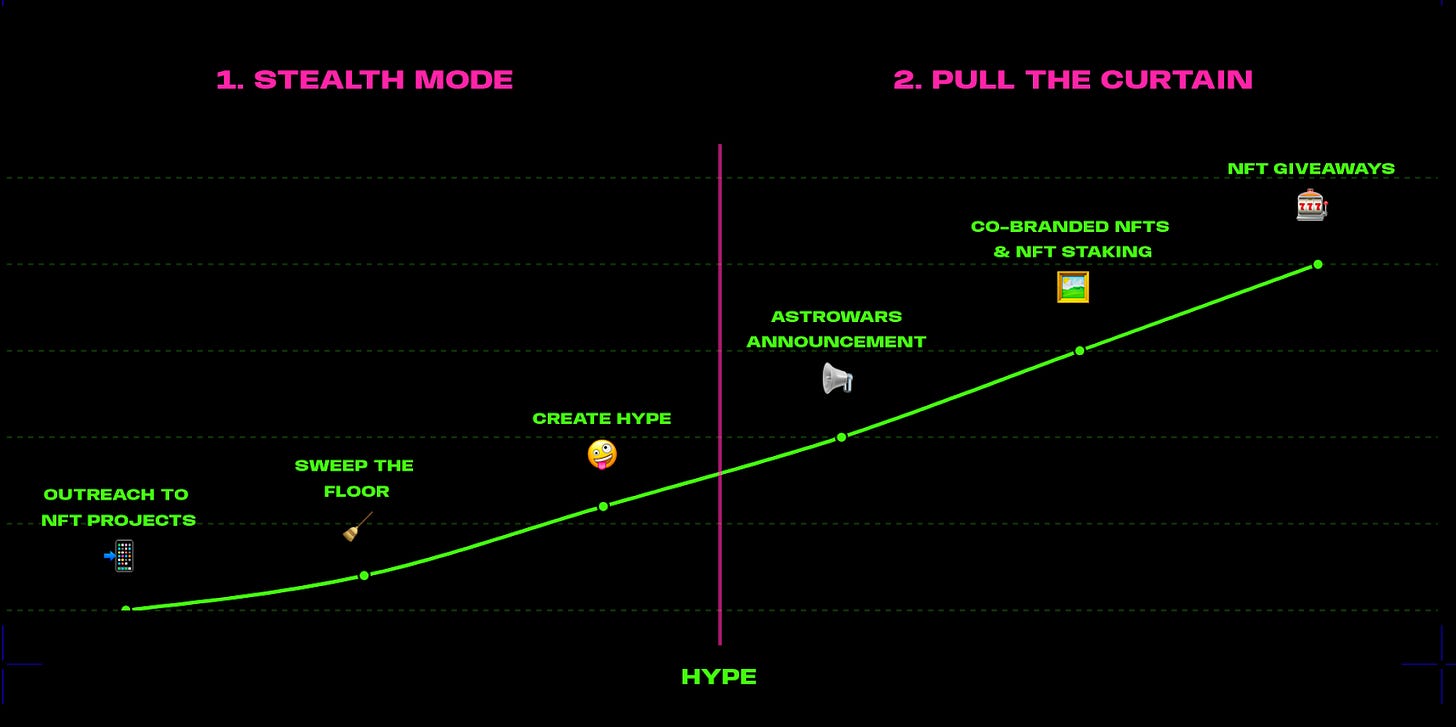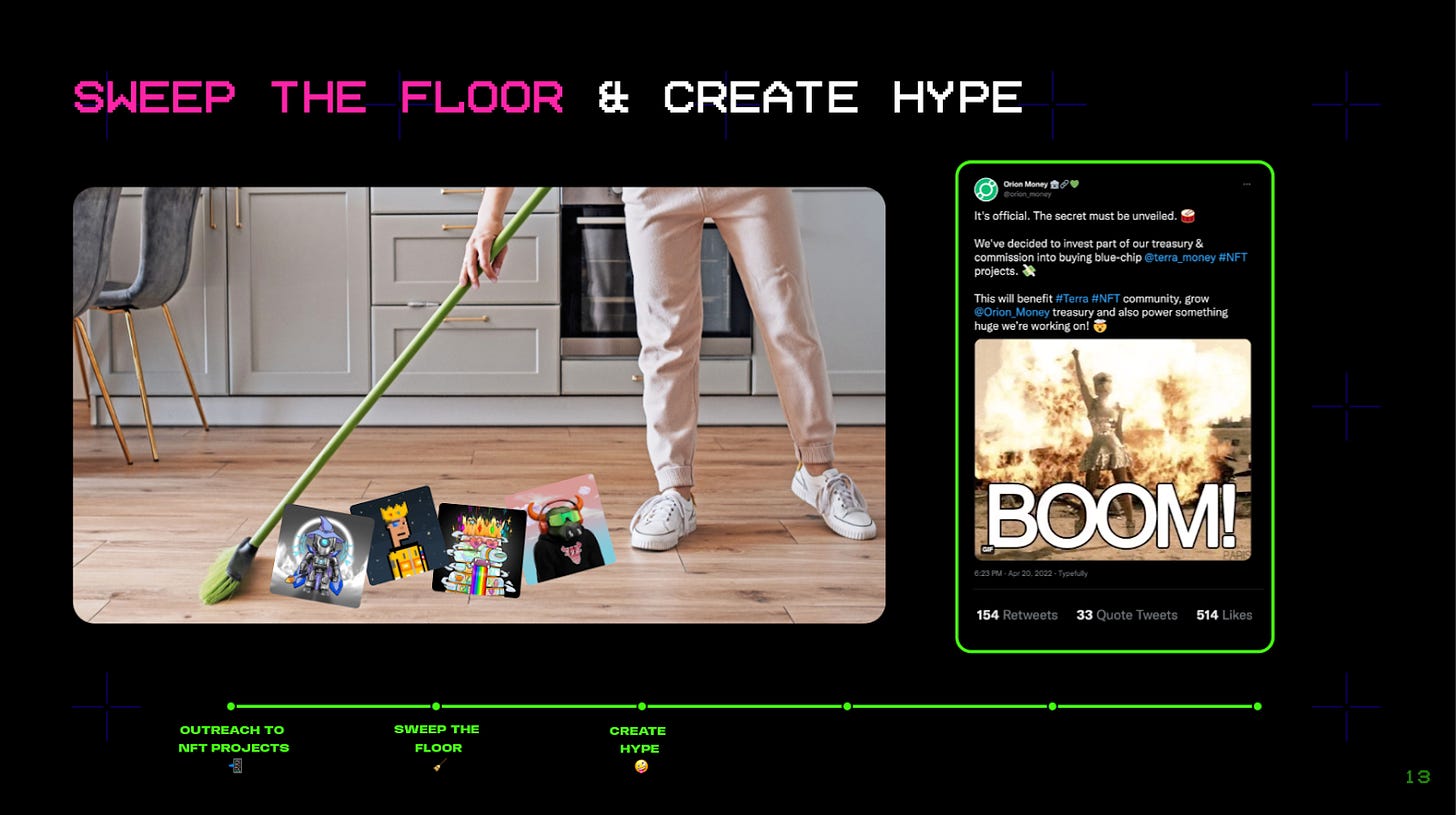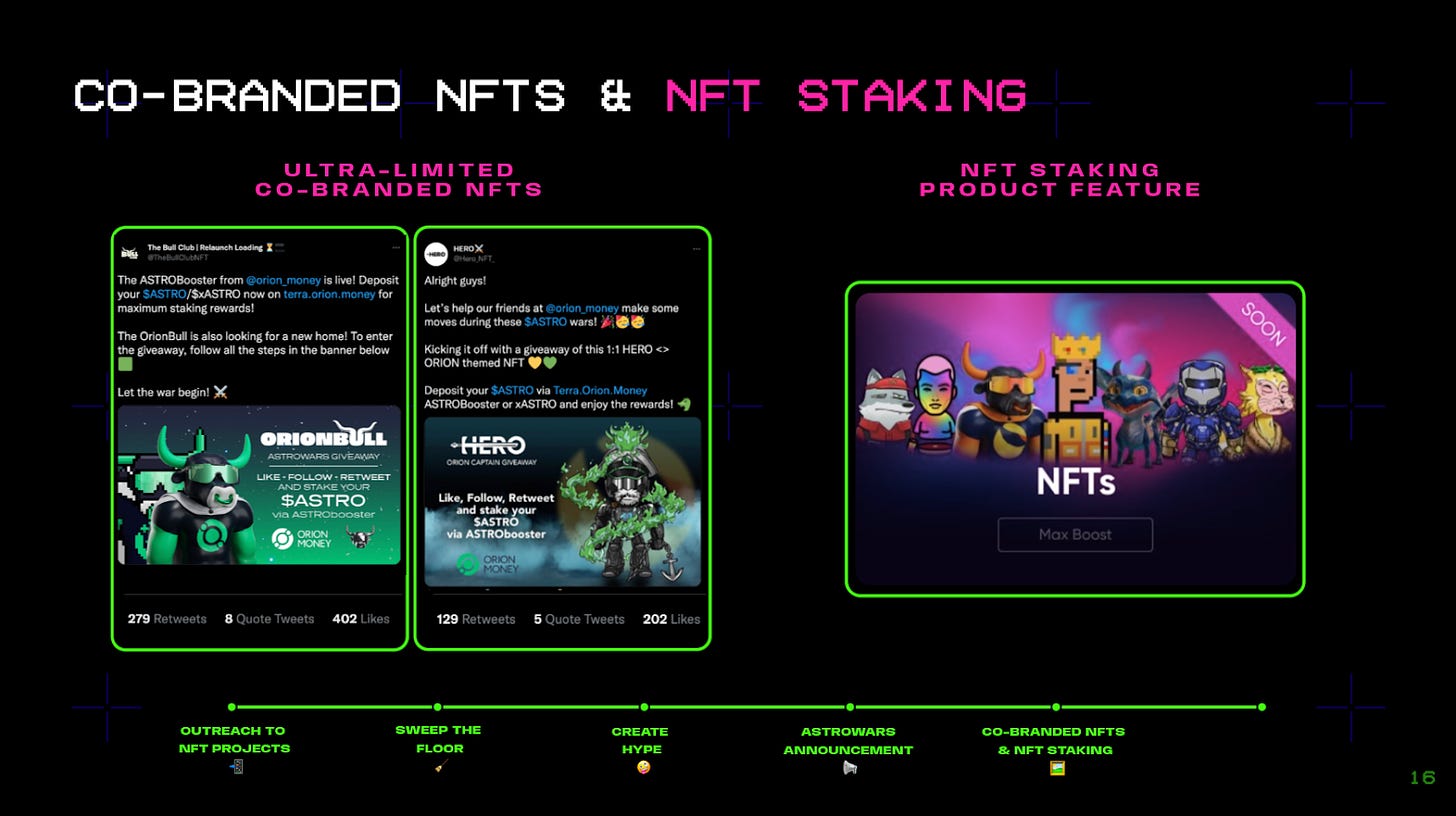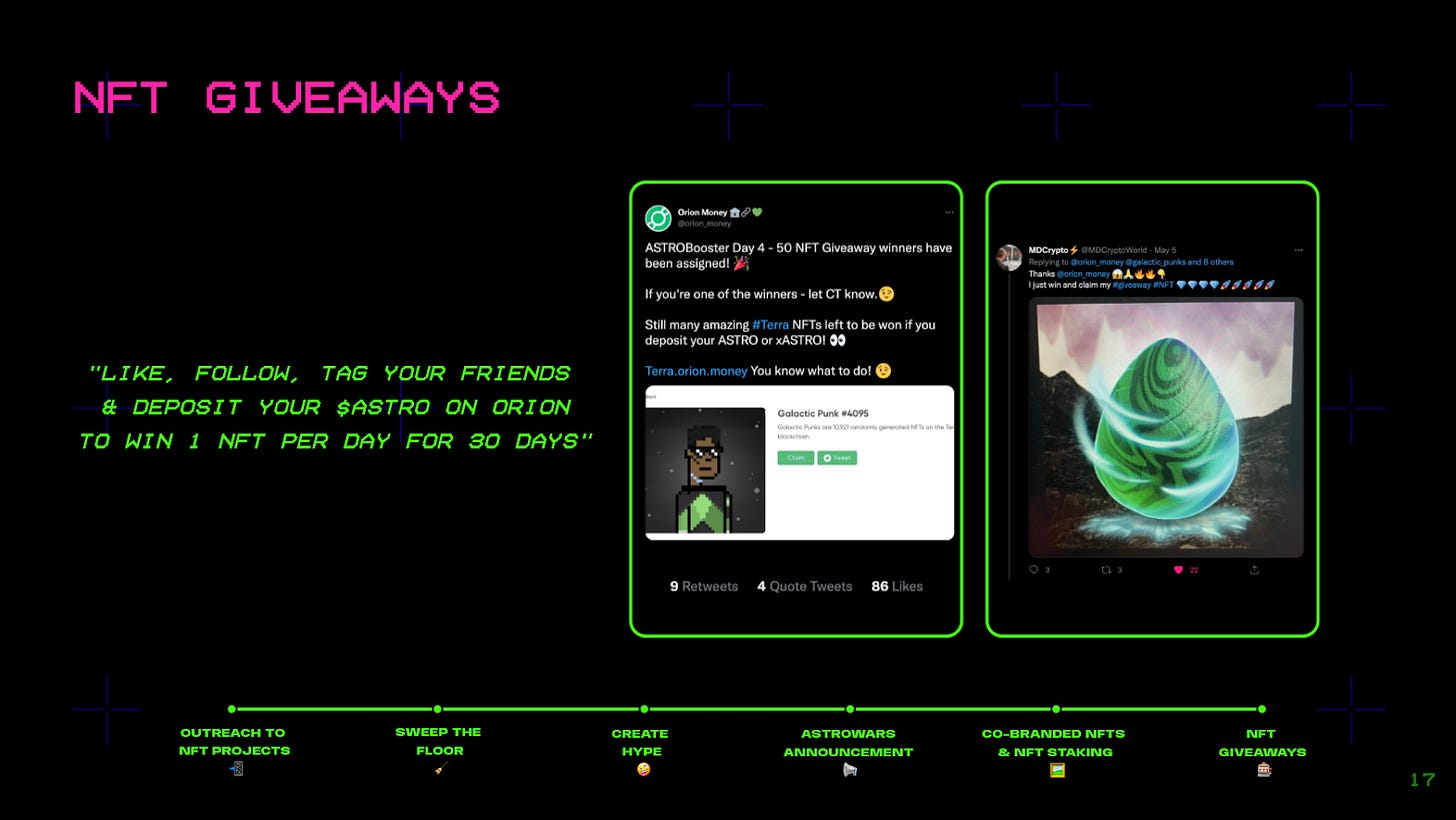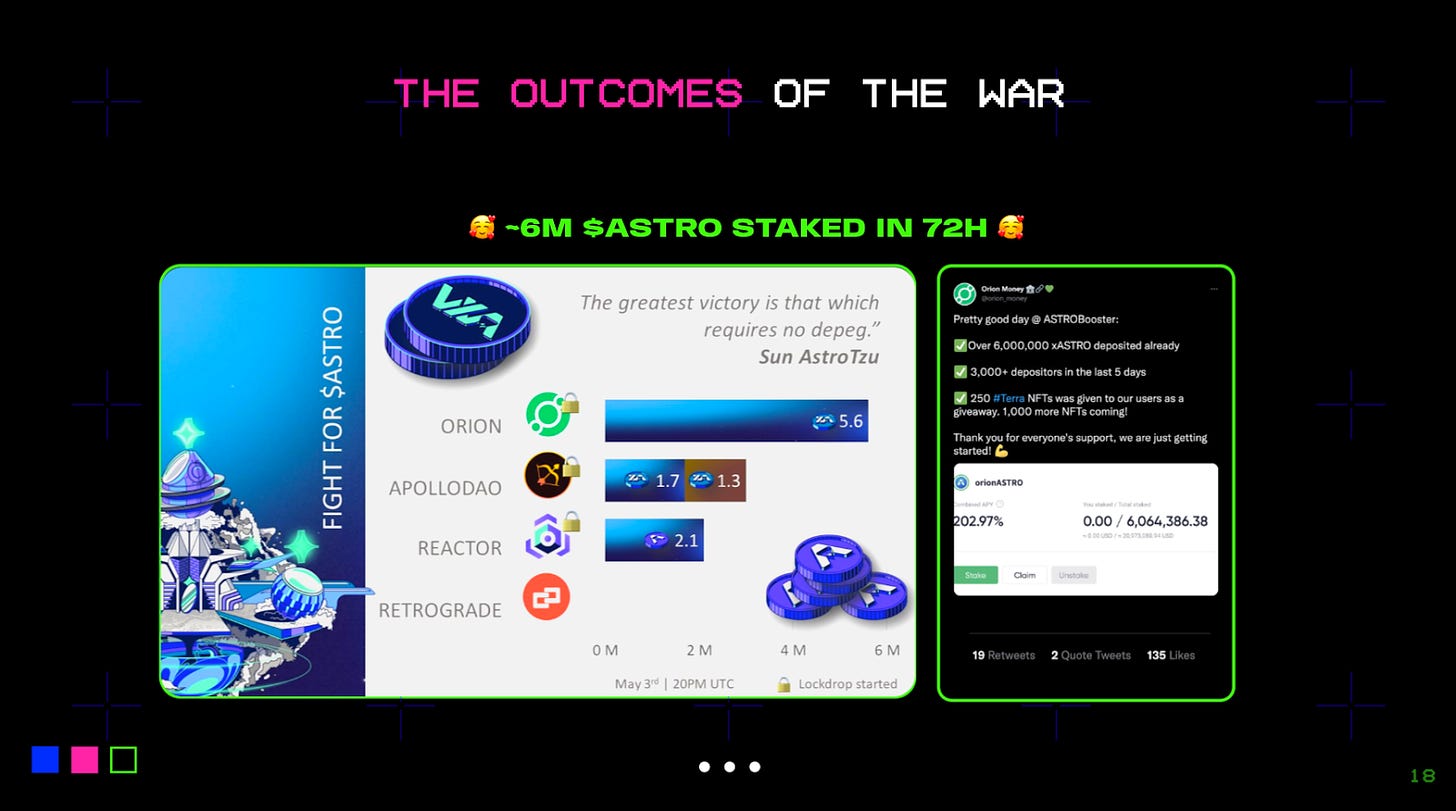The NFT Partnerships Growth Playbook
How to Drive Engagement, Revenue, and a Create a Brand Moat with NFT Partnerships
What you’ll learn in this playbook (reading time: 6 mins).
How to identify, outreach, and partner up with NFT projects
How to create mystery and hype together with your NFT partners
Tactics to grow adoption and revenue via NFT partnerships
In recent years, NFTs have emerged as a novel channel to bootstrap communities and drive coordinated user engagement. In this post, I want to share with you the playbook for how utility-based products, like DeFi or SaaS, can partner with NFT communities to fast-track product adoption, revenue growth, and brand differentiation through a mix of utility and social identity. This is the story of how we did it at Orion Money.
Earlier last year, I was working with Orion Money, back then a prominent DeFi project on Cosmos. Their product was simple — when you deposited crypto on Orion, you earned higher-than-your-bank yield.
Together, we came up with a strategy to collaborate with the top NFT projects in our ecosystem and engage their communities to drive millions worth of deposits in just a few days, gain ~25% market share, and stand out from competitors.
Our strategy started with simple hypotheses:
We knew that our DeFi product had good utility (eg. high yield). However, other players had similar propositions, which made it harder for users to distinguish alternatives. Also, the learning curve to get your wallet set up and reach the aha moment was steep, meaning activation cycles are long.
NFT ownership was bringing a great sense of social identity, cohesion, and belonging to Web3 communities. By just owning a similar avatar on social, people were helping each other go through their learning curves faster, answering each other’s questions, re-sharing content, and driving adoption.
If we could replicate this social identity within our audience, we thought we could differentiate our brand from competitors. Despite being known in the ecosystem — we had an audience of ~200k followers — we didn’t have an NFT collection of our own. But we quickly realized we could tap into existing NFT communities to achieve an even greater impact.
Based on this hypothesis, we developed a two-phase strategy: 1) Stealth mode, and 2) Pull the curtain.
Phase 1: Generate Hype in Stealth mode
The first phase was about partnering with NFT communities while building hype with the broader space.
We started identifying the top NFT projects in the ecosystem by asking directly to our audience which one we should partner up with. That made people feel part of the decision-making process, creating a sense of community while qualifying our partner outreach.
Once we identified these NFT projects, we swept the floor of their collections. In NFT lingo, floor-sweeping means buying en-masse a lot of NFTs of a specific collection. This had the following effects:
It instantly grew the floor price of these NFT collections, increasing the worth for existing holders and quickly generating questions as to “what’s going on here?”.
It attracted the attention of the NFT project founding teams, showing them that we were putting skin in the game and were committed to their success.
It generated even more hype with non-holders, driving more attention and buying pressure toward those NFTs collections.
We then publicly announced we were including those NFTs as part of our official treasury — again showing the wider NFT community our commitment to our partners and the overall NFT movement.
The whole stealth mode was based on this meme idea: “Show me that you’re doing X without telling me you’re doing X” — in our case, ‘X’ meant launching a new product with NFT-enabled features. This meme is powerful because:
It creates mystery and hype, as it leads people to ask questions like “Why are they doing this?” and “What is the point of all this?”.
Hype leads to speculation and discourse — people in the audience try to build opinions about why the brand is making these announcements, which in turn drive social mentions and sharing that quickly compounds an already engaged community.
Phase 2: Pull the Curtain for The Big Reveal
Once we’ve generated enough attention and mystery with our audience, we moved into the “pull the curtain” phase. This was about coming out of stealth and announcing the big reveal: “Why did we sweep the floor of those NFT projects and make all that noise?”
First off — and in a pretty bold move — we formally declared war on our competitors who were offering similar utility-based value props. Together with our NFT partners, we made a coordinated announcement revealing we were partnering with the top NFT communities in the space. The announcement went out on every Twitter, Telegram, and Discord server of each of our NFT partners, and was broadcast to hundreds of thousands of people, compounding the wave of momentum that we were building. Plenty of memes were used in the announcement, creating lore and making the whole thing fun for everyone involved.
To substantiate our partnerships, we selected a few of our NFT partners to co-design ultra-limited 1/1 NFTs as part of their collections, adding the Orion Money brand as a unique trait of their NFTs.
This was powerful because:
It literally baked our brand identity into the aesthetic culture of the ecosystem.
It forged the pact between our brand, representing a practical, financial utility, and our NFT partners, which were instead a symbol of social identity and community.
This had the compounded benefit of scaling our brand reach to multiple, engaged communities, while also differentiating from competitors that were marketing their utility as a standalone. By adding NFTs to the mix, we offered these audiences another reason why to choose us— the chance to be part of something bigger, even bigger than Orion Money itself.
But we didn’t stop there. Shortly after, we announced an NFT staking feature — owners of NFTs belonging to our partners could stake them on Orion Money to generate even higher yield and access premium features. At this point, we were building a feature where their social identity component — their NFT avatar — was itself contributing to increasing their utility.
As a final tactic, we announced an aggressive NFT giveaway campaign. Remember all the NFTs we bought back in phase 1 with the floor-sweeping? We’ve decided to give them all back to the community to encourage product adoption. If you made a crypto deposit to Orion Money the next day, you could win a random NFT of our selected partners every day until stocks last.
The outcomes
The aggressive growth tactics of phase two drove an incredible inflow of deposits — we managed to accumulate over $16M worth of staked crypto across 3,000 new users, gaining over 25% market share of that specific token deposit.
And that was only about 5 days after the public announcement!
Closing thoughts
In conclusion, NFTs can be a powerful marketing channel to create a sense of belonging and a brand moat.
If you have a utility-based product like DeFi or SaaS, partnering with various NFT projects can be even more powerful than building your own collection because:
It lets you tap into multiple audiences and communities while growing your own, scaling your potential reach, and driving audience cross-pollination.
You also piggyback off existing engaged NFT communities. These users are likely to be more technically savvy and to adopt your product, as NFT owners have higher-risk profiles and might be more committed to the Web3 space, even in the bear market.
By using a two-phase strategy that creates mystery and speculation, a stealth mode can be an effective product marketing strategy in creating hype and anticipation ahead of a product launch. This is something every product marketer — in Web3 but also in SaaS — could leverage to shape the narrative around utility-based products, creating lore and storytelling that drives engagement and brand-building.
We’ve also seen how it’s the combination of practical utility (eg. yield) and social identity (eg. NFT) drive both product adoption and brand moat. As more and more utility-based SaaS enter the Web3 space, I think more of them will use NFTs to bootstrap acquisition, shorten their activation cycles, and drive retention by leveraging NFT-enabled sense of belonging and product features.
If you are a growth or product marketer working in DeFi, NFTs, or SaaS, I hope this playbook will spark ideas on how to approach your community building and customer acquisition motions, especially as NFTs become part of growth channels beyond just Web3.




